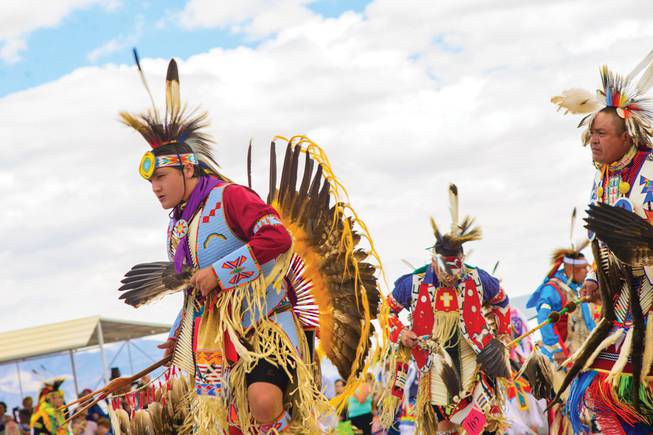
Bryan Hainer / Special to The Sunday
Members of multiple tribes from across the Western United States attend a powwow Saturday, May 23, 2015, at the Las Vegas Paiutes’ snow mountain reservation off U.S. 95 North.
Monday, July 20, 2015 | 2 a.m.
Just north of downtown, sandwiched between Ewing Brothers Towing and Main Street, lies a sovereign nation.
The 31-acre plot of land belongs to the Las Vegas Paiute Tribe, which owns a bustling smoke shop that sits on the corner of the property, beckoning customers with low prices and a large selection of cigars and cigarettes.
Down a nondescript road called Paiute Drive are a couple dozen homes nestled in trees, a health clinic, a police department, a child development center, a community hall, an administrative building and a cemetery. The area is what tribal members refer to as “the Colony,” their headquarters since 1911, when Las Vegas ranch owner Helen Stewart deeded 10 acres to the tribe.
“There is a reason Las Vegas exists, and part of it has to do with its indigenous past,” said William Bauer, a UNLV professor who teaches Native American history.
Businesses and organizations
■ Las Vegas Paiute Tribal Smoke Shop
1225 N. Main St., Las Vegas
■ Snow Mountain Smoke Shop
11525 Nu-Wav Kaiv Blvd., Las Vegas
■ Las Vegas Paiute Golf Resort
10325 Nu-Wav Kaiv Blvd., Las Vegas
The Las Vegas Paiute Tribe employs about 300 people, including 13 tribe members.
■ Las Vegas Paiute Tribe Health and Human Services
1257 Paiute Circle, Las Vegas
The goal of the health clinic is to provide “culturally appropriate and holistic health care.” Health services, which are offered to all North American federally recognized Native American tribes, include medical, dental, vision, behavioral, social and some specialty care, such as obstetrics and gynecology. The clinic also houses a pharmacy.
■ Las Vegas Paiute Tribal Police Department
6 Paiute Drive, Las Vegas
The police department employs nine people, including a captain and a lieutenant. Officers patrol the Las Vegas Paiute’s 31 acres downtown and serve as first-responders in neighboring jurisdictions if other police departments need help. Officers and police cadets also participate in a two-day annual event to clean up the areas around the Colony and Snow Mountain Reservation.
■ Las Vegas Paiute Tribe Child Development Center
13211/2 Ken St., Las Vegas
The child development center operates a preschool that incorporates into the curriculum cultural traditions, such as dancing and crafts. The center also is open to children up to age 12 after school and during the summer. Children of federally recognized Native American tribes may enroll, along with a limited number of non-native children.
The Las Vegas Paiutes are descendants of the Tudinu, or Desert People, who since at least 1100 A.D. lived along the Colorado River, spreading north and west into what today is Southern Nevada, Utah and California. The Grand Canyon was integral to their history and traditions.
While outsiders who visited the territory described the land as barren and harsh, the Southern Paiutes, a tribe that included more than a dozen smaller bands, developed a culture suited to the arid conditions. They found natural springs and hunted for meat, birds and fish; every fall, tribe members took part in communal hunts for jack rabbits and antelope. Tribes made use of nearly every plant available, gathering and drying edible roots, seeds and berries, and using hemps and reeds to weave baskets, shoes and tools. The Moapa Paiutes for centuries irrigated corn and bean fields along the Muddy River, which drains into Lake Mead.
Although documentation of their history is scarce, the tribes left stories of their lives in petroglyph and pictographs on canyon walls in Valley of Fire State Park, Red Rock National Conservation Area, Spring Mountains National Recreation Area and Sloan Canyon National Conservation Area. The engravings are more than art; they are religious symbols of great spiritual importance to the tribe.
After centuries on the same land, the Southern Paiutes first made contact with Europeans in the late 1700s, when a Spanish friar crossed their territory. By the 1820s, the Old Spanish Trail, a 2,700-mile route linking Santa Fe, N.M., to Los Angeles, opened across Paiute land, bringing scores of traders and travelers to the region.
The white travelers killed the plants and animals on which the Paiutes survived and seized their water. Homes frequently were raided, and a number of Paiute children were kidnapped and sold as slaves. As a result, tribe members, traditionally friendly and welcoming, avoided newcomers.
In 1855 and 1856, Mormon missionaries, Las Vegas’ first settlers, tried to convert the Paiutes, but tribe members objected. The frustrated missionaries left the area, but more settlers came.
During the 1880s, unable to keep pace with their rapidly changing environment, having had their farming disrupted and forced to flee into the desert, many Paiutes relented and began working on ranches owned by white settlers. Men cut hay and hauled wood, while women worked as maids and cooks. Many of the Paiutes adopted aspects of the white culture while keeping their traditional ways.
By 1905, railroads reached Las Vegas, and officials organized a town site, launching a spate of construction that brought more settlers to the area. With them came diseases the Paiutes had no immunity against — particularly tuberculosis and measles. By the latter half of the 19th century, much of the Paiutes’ land had been claimed by ranchers. As a result of colonialism and disease, the Paiutes withered in strength and numbers.
Sources: Nevada Indian Territory, Washoe Tribe, Te-Moak Tribe, Duckwater Shoshone Tribe, Hualapai Tribe
Realizing a culture was in peril, Stewart deeded 10 acres of land, a small portion of her holdings, to the Las Vegas Paiute Tribe. But members’ lives remained hardscrabble; poverty was endemic. They built their homes by flattening 5-gallon tin drums and lashing scraps of metal together. While other tribes raised cattle, many of the Las Vegas Paiutes scavenged for food at a nearby stockyard.
Elders were stoic and hesitant; they believed if outsiders knew about the tribe, they’d hurt it. It wasn’t until 1970 that the federal government officially recognized the Las Vegas Paiutes as a sovereign nation.
The Paiutes’ fortunes changed again in 1978 — this time for the better — when a tax-free smoke shop was erected on the reservation. The shop has brought millions of dollars in revenue to the tribe.
A disappearing language
The Las Vegas Paiutes pass down their cultural traditions generationally. But there’s one aspect of their heritage on the verge of extinction as elder tribe members die: Nuwu, the Southern Paiute language. “The language is getting lost,” Tso said. It’s a problem common to many tribes. Older generations find it increasingly difficult to teach native languages to younger generations who grow up speaking English.
The Southern Paiute Chairman Association frequently discusses the issue at monthly meetings, and every Thursday, elder Paiute members gather to teach the language at a social event, Tso said. A decade ago, the Washoe County School District began a language program to address the problem. The Paiute language program now has expanded to three high schools. The language taught is a Northern Paiute dialect associated with the Pyramid Lake tribe that lives northeast of Reno. The classes are offered to all students, regardless of ethnic background. Sixty students are enrolled.
“Once the students are in it the first year, they want to take a second year,” said Jillian Fillmore, Indian education specialist for the Washoe County School District. In the future, the district hopes to offer an advanced immersion class in which students would speak only the Paiute language, Fillmore said. The Clark County School District doesn’t offer Native American language classes, but if students are interested in taking a college course to learn one, they can apply for funding, said Billie Rayford, the district’s interim chief educational opportunities officer.
As the city of Las Vegas grew, so did the Las Vegas Paiutes’ acreage. In 1983, Congress returned to members 4,000 acres of ancestral land in northwest Las Vegas. In 1997, the tribe added another 8 acres to the downtown reservation, including a burial ground.
Today, the 4,000 acres includes three golf courses and a clubhouse at the Las Vegas Paiute Resort, which is flanked by Sheep Mountain to the east and Mount Charleston on the west. Tule Springs, a fossil-rich wash that was declared a national monument last year, sits directly behind the golf courses. Undeveloped land to the south can be seen in the distance.
Tule Springs was the seasonal migration route the Paiutes’ ancestors used centuries ago when they split their time between Mount Charleston in summer and the valley in winter. The land now factors directly into the economic livelihood of the 56 Las Vegas Paiutes living today.
Tribal Chairman Benny Tso said the Paiutes support development around Tule Springs, as they think it would complement the tribe’s plans to build a hotel and conference center on native grounds. The resort could feature a spa and gaming, Tso said.
The Paiutes expect to have a spot on a Tule Springs advisory committee, created by the U.S. Interior Department, to shape development on city land around the national monument. One idea is to treat the monument like oceanfront property by building restaurants and shops with outdoor seating and views.
The Las Vegas Paiutes also are finalizing a contract to build a solar project on reservation land, Tso said.
“It’s exciting because it’s new to the tribe,” he said. “Economically, it’s going to be beneficial.”
For decades, the tribe had little control over what rose around their colony downtown, so Tule Springs represents a new chapter in their history. Improved communication has created a “government-to-government” relationship as opposed to a “government-within-a-government” scenario, Tso said.
“I envision this will be the staple of the tribe within the next 15 years,” Tso said. “What serves (the city) is also going to serve us.”
There are four major tribes in Nevada
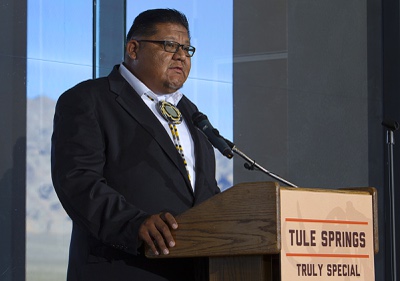
Benny Tso, chairman of the Las Vegas Paiute tribe, speaks during a news conference marking the creation of the Tule Springs National Monument at the Las Vegas Paiute Resort northwest of Las Vegas, Monday, Dec. 22, 2014. The 22,650 acre site on the northern edge of the Las Vegas Valley features fossils from the Ice Age, including mammoths, bison, American Lions, camelops and sloths.
Becoming a Las Vegas Paiute
Enrolled members: 56
Tribe leaders declined to explain what constitutes a member of the Las Vegas Paiutes. Chairman Benny Tso said every tribe has its own enrollment criteria, but most members keep it to themselves. The Las Vegas Paiutes faced criticism in 1999 when 14 members were disenrolled from the tribe, sparking years of legal battles and creating a rift among members. A mandate by the then-tribal council banned people from the tribe if they didn’t have one-quarter Southern Paiute heritage, even though some had ancestors listed on a 1940 census roll. Critics said the main motive was money; the disenrolled members were stripped of their share of disbursements from the tribe’s businesses, worth about $100,000 a year to each member. Tso declined to comment on that chapter of the tribe’s history.
Southern Paiutes (Nuwu)
The Southern Paiutes, which once included 15 bands across Southern Nevada and the West, today includes two federally recognized bands in Nevada: the Las Vegas Paiutes and the Moapa Paiutes. A band also lives in Pahrump, but it’s not federally recognized.
The tribe has lived in the region since at least 1100 A.D. and originally survived by harvesting plants, hunting game and drinking spring water.
The Las Vegas Paiutes now operate a golf resort and smoke shops. The Moapa band owns a travel plaza off Interstate 15 and is developing a solar project on tribal land.
Washoe (Wa She Shu)
The Great Basin, a large swath of land that includes much of Nevada, has served as the Washoe tribe’s home for at least 9,000 years.
According to the Washoe’s creation story, a coyote brought the people to their homeland near Lake Tahoe, which became the geographic and spiritual center of the tribe. Tribe members lived off freshwater clams and fish, as well as plants and pine nuts. Fall hunting sustained the tribe during the cold winter months.
Today, the Washoe tribe of Nevada and California runs the Meeks Bay Resort on the western shore of Lake Tahoe. The tribe’s headquarters is in Gardnerville, about 16 miles south of Carson City.
Northern Paiutes (Numu)
The Northern Paiutes live primarily in northern Nevada. Members have lived near Pyramid Lake and Walker River for centuries.
The Northern Paiutes believe power resides in natural objects such as plants, animals and landforms. Historically, members were hunters and gatherers who traveled in search of food.
At the Pyramid Lake Indian Reservation, there’s a scenic byway and a cultural center that houses tribal artifacts.
Western Shoshone (Newe)
The Western Shoshone’s land originally included central Nevada, southern Idaho, parts of northwest Utah and the Death Valley area of California. The tribe often divided into smaller extended family groups and lived in areas where they could hunt and gather to sustain themselves.
Four Nevada bands — the Elko Colony, Battle Mountain Colony, Wells Colony and South Fork Reservation — united to form the Te-Moak Tribe, which adopted a constitution recognized by the federal government in 1938.
The Te-Moak Tribe is based in Elko. The Duckwater Shoshone Tribe lives in northern Nye County.
Hualapai Tribe
(Across the border in Arizona)
Located in northwest Arizona, the Hualapai are a federally recognized tribe with a reservation that includes 1 million acres along the Grand Canyon and Colorado River. The tribe’s economic drivers are tourism, cattle ranching, and arts and crafts.
There is no gaming on the reservation. Instead, the tribe operates Grand Canyon West, which offers tour packages and Grand Canyon views from a glass bridge called the Skywalk. The tribe also owns Hualapai River Runners, a rafting company on the Colorado River.
A total of 1,621 people live on the reservation, which includes Peach Springs, about 55 miles east of Kingman.
Ashley Noelle Hill, left, a graduate of Southeast Career and Technical Academy and a biological science major at UNLV, is a Lakota of the Sisseton-Wahpeton Sioux Tribe and is one-sixteenth Choctaw of the Choctaw Nation of Oklahoma.
In January, Hill, 20, an ambassador for Native American students on campus, was named Miss Native UNLV. She shared her thoughts with The Sunday about what it means to be Native American.
I’ve often been hesitant to claim my Native roots and am unsure if it’s even okay for me to claim that heritage. I grew up in the Nevada foster care system and therefore disconnected from my indigenous culture. Even now, with a clear knowledge of my tribal connections, I continue to have little history with my tribe and their cultural ways. Feelings of inadequacy, insecurity and a sense that there are things I ought to know that no one ever taught me linger as I struggle to have a deeper, more intimate connection with my past.
Although I did not have the privilege of being immersed in my Lakota culture from youth, I am lucky enough to know and appreciate that Native American culture is profound, true and intricate. I identify especially with an awareness of the cosmic connections, not only from person to person but with the earth, skies, trees, rocks, plants and animals.
Native Americans are not one big group of an exclusive set of people. We are comprised of many different ethnic groups with rich cultures and a spiritual way of life. Native American life is based on connection, community and inclusion. Everyone has a role, and everyone is important. That concept resonates with me in a profound and lasting way.
Reconnecting the circle between Native Americans has never been more important. As I see disconnection in the world, I’ve found myself gravitating back to the native model of community and tribe. There is comfort in a community where everyone sees themselves as part of whole. We all want to be in sync with our world and ourselves; native culture provides that.
I am a first-generation college student in my family. I firmly believe knowledge is the most important thing in this life, and I am eager to take advantage of the educational benefits offered to Native American students like myself. I also am incredibly thankful to my heritage for providing me the keys to my success. I invite and encourage my native brothers and sisters to step forward to learn about their Native heritage and its extraordinary people and culture.
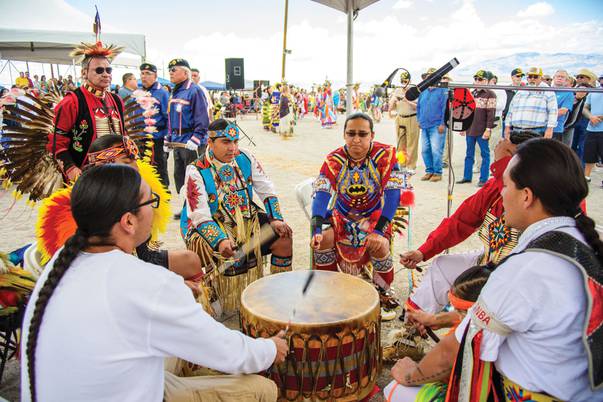
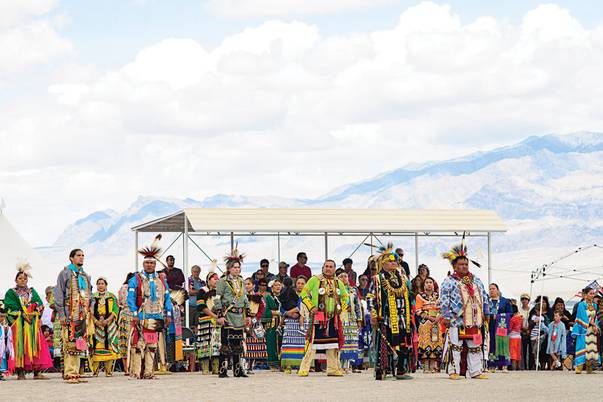
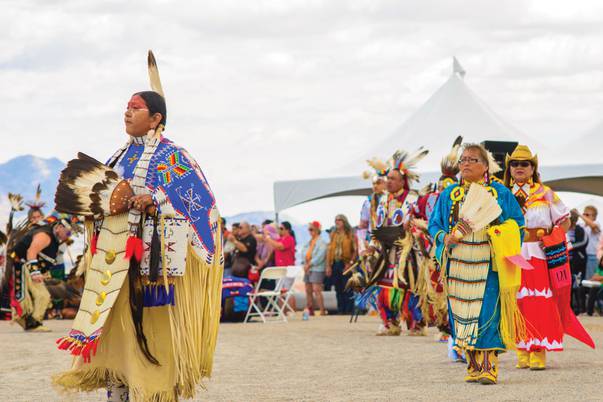

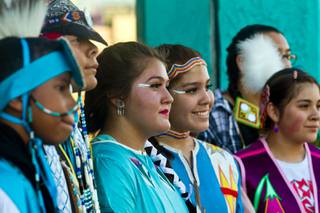

Join the Discussion:
Check this out for a full explanation of our conversion to the LiveFyre commenting system and instructions on how to sign up for an account.
Full comments policy